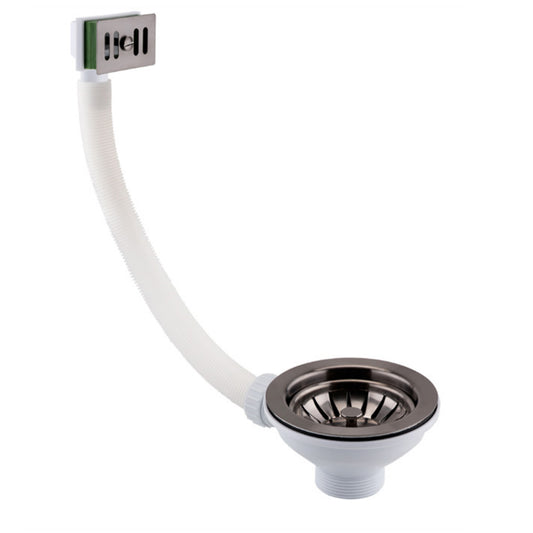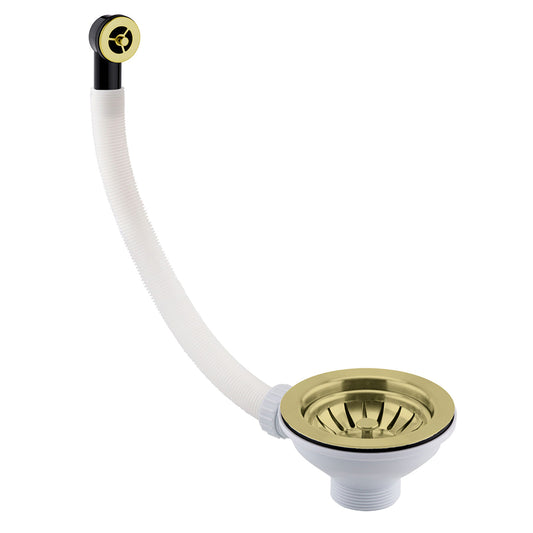Mastering Kitchen Sink Waste & Trap Installation: Your DIY Guide to Plumbing Success
Table of Content:
-
Introduction
-
The significance of proper sink waste installation
-
Understanding the components of your sink waste system
-
Step-by-step Guide to kitchen sink waste installation
-
Conclusion
Introduction
A well-functioning kitchen sink is the heart of an efficient kitchen, and understanding how to install its waste pipe and trap is a valuable skill for any DIY enthusiast.
In this extensive guide, we will delve deep into the intricacies of fitting kitchen sink waste pipes and traps, step by step.
Whether you are embarking on a kitchen renovation or simply need to replace a sink drain, this DIY tutorial has got you covered.
The Significance of Proper Sink Waste Installation
A properly installed kitchen sink waste system ensures effective drainage, prevents leaks, and maintains a clean and hygienic kitchen environment. Learning how to connect the sink waste, overflow pipes, and even integrate a washing machine or dishwasher hose can save you both time and money on plumbing services. So, let's roll up our sleeves and embark on this journey to plumbing success.

Understanding the Components of Your Sink Waste System
Before we jump into the installation process, it's essential to acquaint ourselves with the key components of your sink waste system. Here's what you need to know:
- Sink Drain: The exit point for wastewater from your sink. Sink drains may have slight variations depending on the sink model and manufacturer.
- Gasket: A rubber or foam gasket provides a watertight seal between the sink drain and the waste pipe.
- Overflow Pipe: Prevents water from overflowing the sink, directing it into the waste system. The type of rubber seal used depends on the sink's shape, whether round or square.
- Sink Trap: The sink trap plays a pivotal role in preventing sewer gasses from entering your kitchen. Some sink traps come with an extra spout for connecting a washing machine or dishwasher hose, like our Brushed Brass Kitchen Sink Waste with Trap.

Step-by-Step Guide to Kitchen Sink Waste Installation
Let's now walk through the meticulous process of installing your kitchen sink waste system:
Attaching the Sink Waste: Begin by positioning the sink drain underneath the sink, ensuring that the hole faces the overflow drain. Place a rubber or foam gasket on top of the sink drain. Carefully align the top drain over the gasket and secure it with the provided long screw. Take your time to avoid scratches or dents on the sink's surface.
Connecting the Overflow Pipe: Depending on your sink's shape (round or square), select the appropriate rubber seal for the overflow pipe. For example, our Copper Basket Strainer Waste and Square Overflow is perfect for square-shaped overflows. Press the rubber seal onto the square section leading to the pipe. Hold the seal in place while threading a screw through from the sink side to secure it.
Adding the Sink Trap: Install your sink waste trap, ensuring a secure connection to the sink drain. Sink traps often come with an additional spout, perfect for connecting a washing machine or dishwasher hose.
Attaching the Washing Machine or Dishwasher Hose: To connect your appliance's hose to the sink trap, use a jubilee clip to ensure a secure and leak-free connection. Tighten the jubilee clip using a screwdriver for added peace of mind.
Working on the Waste Pipe: Depending on your specific setup, you may need to cut and adjust waste pipes and elbows. Ensure that your waste pipe maintains a gentle slope (1cm in 40cm) to promote efficient drainage and prevent odors.
Completing the Installation: Once all components are in place, add pipe clips to secure the waste pipes and prevent accidental knocks. For a reliable strainer sink waste, consider our Brushed Black Basket Strainer Kitchen Sink Waste.

Conclusion
With this comprehensive DIY guide, you've unlocked the art of kitchen sink waste and trap installation. Whether you're connecting sink waste, overflow pipes, or integrating a washing machine or dishwasher hose, you now possess the skills and knowledge to tackle this essential plumbing task.
By comprehending the components of your sink waste system and diligently following the step-by-step instructions, you can ensure a smoothly functioning kitchen sink. Bid farewell to leaks and plumbing woes as you confidently take charge of your kitchen sink's waste and trap installation.
Embark on your DIY journey, enhance your plumbing prowess, and create a kitchen that thanks you for its efficient and leak-free waste system. Explore our Kitchen Sink Waste Collection to find all the components you need to complete your project successfully.
Explore our other related blog posts :
Kitchen Sink Maintenance: Dos and Don'ts for a Smooth-Flowing Home
How to Clean Kitchen Sink Drain: Easy Cleaning Solutions
Choosing the Perfect Kitchen Sink: Expert Tips








































